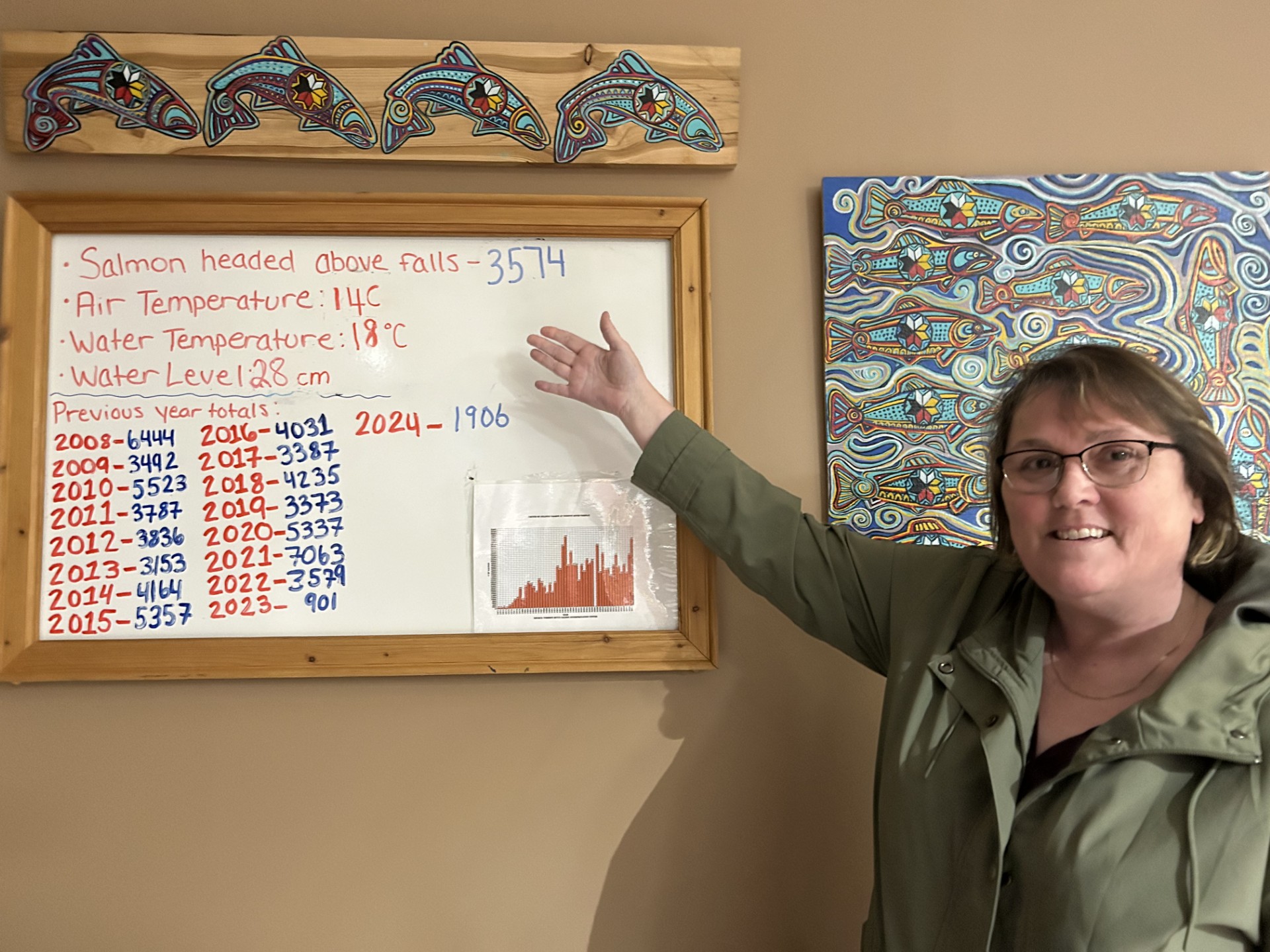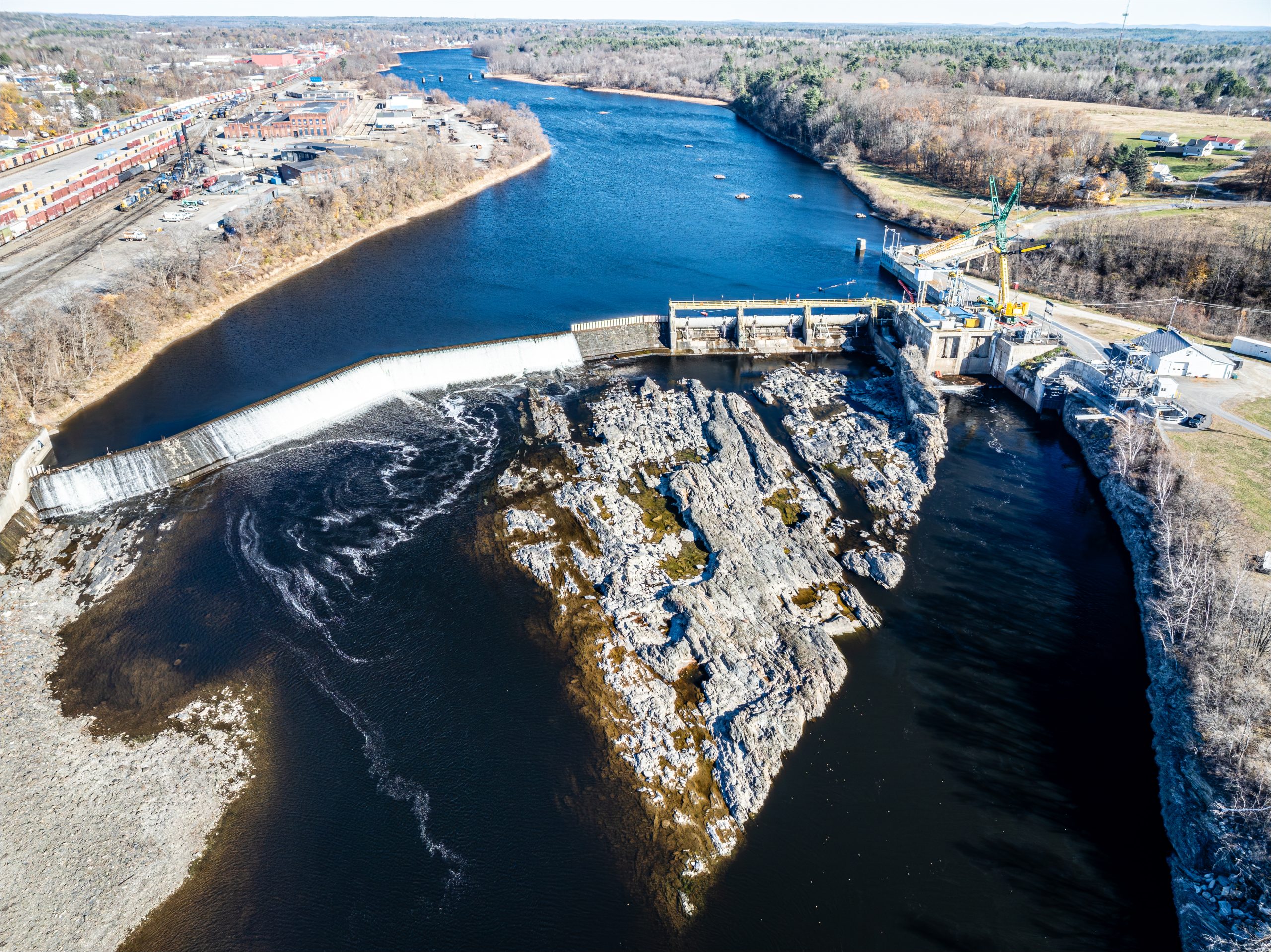
Subscribe & stay up-to-date with ASF

“When the dam is gone there’s going to be a big set of rapids in Skowhegan that comes down into a natural feature called the ‘Great Eddy,’ at the bottom of the gorge. And I think that ‘Great Eddy’ will be a huge piece of shad spawning habitat,” Jeff Reardon, ASF’s Habitat Restoration Project Manager in Maine said, when asked how the Kennebec will look in 10-15 years. “And I think by then we will have had 2 or 3 or 4 years of free-swim-passage to and from the Sandy [River].”
Efforts to restore ocean access to the Sandy River have been raging for decades and took an incredible step forward this week with an agreement between The Nature Conservancy and Brookfield Renewable Partners for the purchase of four dams. The eventual restoration of this section of the river, through a collaborative process with local communities,will connect the Gulf of Maine to the Sandy River for the first time in nearly 200 years.
“The whole focus of recovery in the Kennebec portion of the US range has always been about—if we’re going to make it work, we’ve got to get salmon to the Sandy, with minimal losses passing through the dams,” Jeff said.
Jeff described the outcome of these efforts as “lose-lose.” The dams weren’t required to be removed, but fishways—with relatively high standards—needed to be installed and maintained. And people had lost faith in fishways.
It became clear that only removal would result in significant restoration, with the Edwards Dam being a case in point.
“Literally, as soon as Edwards Dam was gone, we had striped bass, alewives, shad, eels, sturgeon, and a handful of salmon, literally the summer Edwards came out,” Jeff said. “I would say now that the lower Kennebec is probably the most productive place to go fishing for shad anywhere on the US east coast.”
There is still a long road, and a lot of due diligence, before the Sandy River will flow unimpeded into the Kennebec and then out to the Bay. But the results are exciting to imagine. Instead of miles of impoundment—large reservoirs of water above a dam, there will be skiffles, and pools, and new-to-us white water rapids.
“We’re going to get back a living river that nobody has seen in our lifetimes,” Jeff said.
In this week’s edition of Rivernotes, we have the announcement of this agreement between The Nature Conservancy and Brookfield Renewable Partners for the purchase of four dams on the Kennebec River, as well as a report from a restoration project on Prince Edward Island.
Much of Atlantic Canada continues to face drought conditions, while some areas have seen the end of their summer fishing season, and others near the end of theirs.
We have some results from the Crown Angling lease auction in New Brunswick, and some preliminary fence and fishway counts from this season in Newfoundland and Labrador.
We also have several great photo submissions of beautiful salmon over the last week.
In Maine, we have a few more details about the purchase of the four dams on the Kennebec River, as well a reminder about a screening of Scale of Change that will be taking place on Tuesday in Waterville. Kristen Noel, ASF’s Communications Director wrote:
“We are excited to share that an agreement has been reached between The Nature Conservancy and Brookfield Renewable Partners for the purchase of four dams on the Kennebec River in Maine.
Although there’s a long way to go, the sale of these dams, and their eventual removal, means that more than 825 miles of river and stream habitat in the Kennebec watershed will be reconnected to the Gulf of Maine, including some of the best cold-water Atlantic salmon spawning and rearing habitat in the United States.
ASF is grateful to our supporters and proud of our role supporting and catalyzing the agreement between The Nature Conservancy and Brookfield. We can’t wait to share more details about the project when they become available. “
In the meantime, visit www.nature.org/kennebec to learn more.
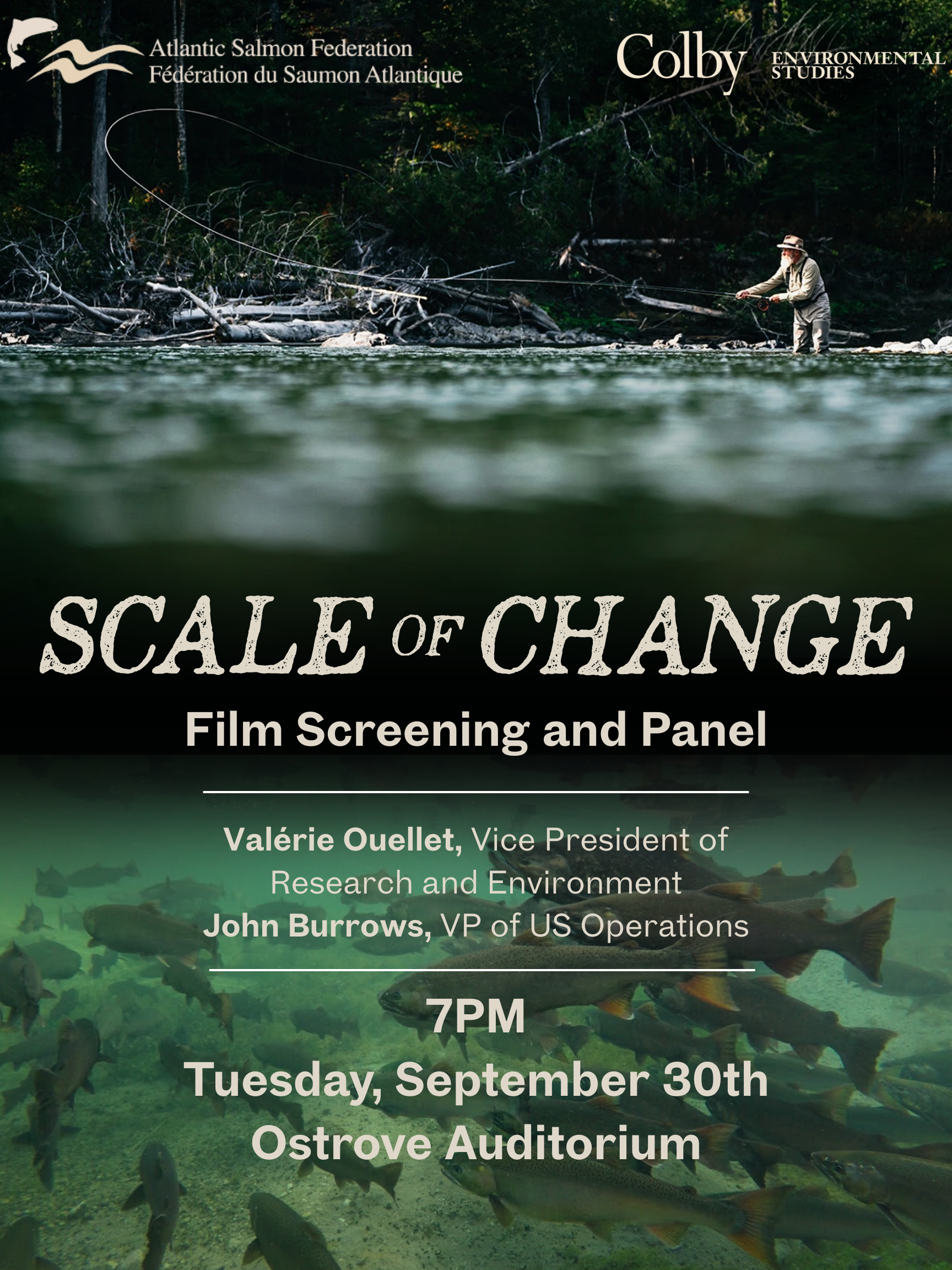
Low water levels are the main the concern in Quebec, as the fishing season is less than a week away from closing for the year. Quebec Program Director Charles Cusson writes:
“La saison 2025 tire à sa fin au Québec mardi prochain le 30 septembre. Il va rester que dame Nature fasse ça part pour améliorer le niveau des rivières avant la période de reproduction. Surtout dû au fait que les montaisons de madeleineaux ont connu un retour à la normale dans plusieurs endroits.
D’après les commentaires qui sont partagés par plusieurs citoyens dans la plupart des régions saumon, « Il s’agit de condition extrême, du jamais vu ». Le débit de la Matane, d’après leur site web était de 3,40 mètres cubes/seconde en date du 23 septembre, un niveau qui n’est certainement pas propice pour que les saumons puissent entreprendre la passe migratoire.
Entretemps, la pêche sportive continue d’être très difficile même avec les nuits plus froides en Gaspésie et Il y a quelques saumoniers qui ont connu un certain succès.
Sur la Cascapédia, quelques pêcheurs ont connu du succès malgré un étiage extrême. Cette saison, au camp Micmac, une initiative appelée « Programme Fishing Buddy » a été instauré pour ceux qui se cherchent un partenaire de pêche. L’initiative s’est avérée être un succès ! De nouveaux liens d’amitié ont été forgés pour les saisons futures.
À la semaine prochaine.”

English:
“As the 2025 season draws to a close in Quebec next Tuesday, September 30, our rivers will need nature to cooperate to improve river levels before the spawning season, especially since the grilse runs have increased and/or returned to normal in most watersheds.
According to comments shared by several residents in most salmon regions, this is an extreme situation, with record low water flows and levels. For example, the flow of the Matane, according to their website, was 3.40 cubic meters/second as of September 23, a level which is certainly not conducive for salmon to enter the fishway.
In the meantime, a small number of anglers have had some success as sport fishing continues to be very difficult even with the colder nights in the Gaspésie region. On the Cascapédia, a few anglers have had success despite extreme low water conditions.
This season, the Camp Micmac have established an initiative called the “Fishing Buddy Program” for those looking for a fishing partner. The initiative turned out to be a success! New bonds of friendship have been forged for future seasons.”
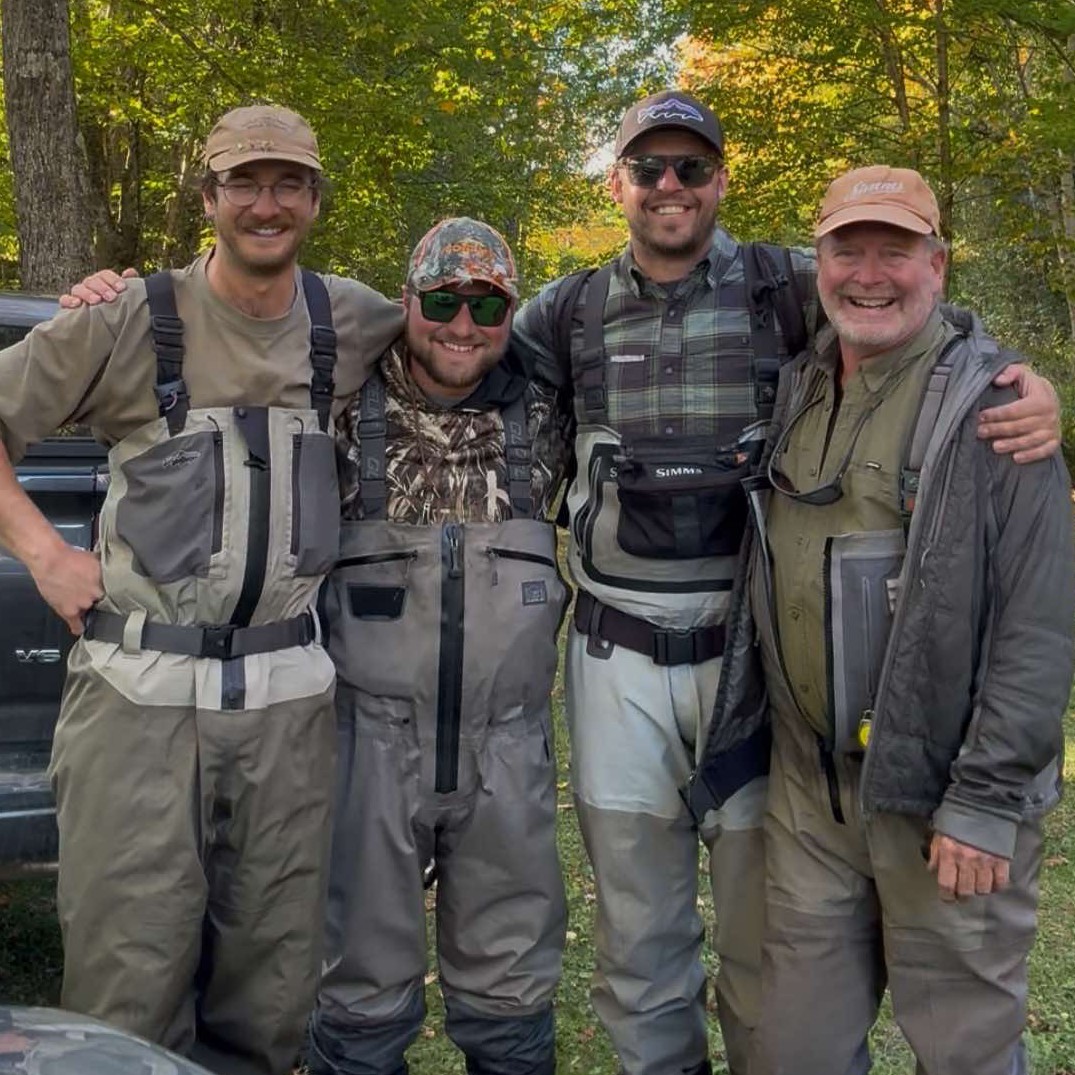
The impacts from the drought in the New Brunswick have been wide-ranging, but there is finally a bit of rain in the forecast. We also have the results of of the New Brunswick Crown Angling leases, which were auctioned off last week. New Brunswick Program Director David Roth writes:
“Across New Brunswick, everyone is looking ahead to the end of this week with cautious optimism, as the forecast finally calls for some much-needed rain. While the precipitation may not be enough to produce a major rise in water levels, it could still encourage fish now holding in the lower reaches of our rivers to push farther upstream in search of prime spawning habitat for the fast-approaching reproduction season.
The severity of this summer’s drought is reflected in water measurements throughout the province. In Saint John, officials have asked residents to conserve water due to exceptionally dry conditions. Farther upriver, the Mactaquac Dam Power Facility was forced to suspend hydroelectric production when water levels in the headpond fell below operating thresholds—another stark reminder of how widespread and significant this year’s shortages have been.
Another major event last week was the auction of New Brunswick’s Crown angling leases. Successful bidders secured rights for the next 10 years. Ahead of the auction, it was widely expected that prices would come in lower than during the last round in 2013, as opening bids had been set much lower (details remain available online: NB Angling Lease Auction). This expectation proved accurate, with one exception. Winning bids landed at, or just above, the minimum. The outlier was the Square Forks lease, which drew strong interest and closed at $56,500 — well above the $12,450 upset price.
On the positive side, water temperatures across all of the province have remained favourable, allowing anglers to continue enjoying the season while we wait for the long-overdue rains to refresh our rivers.”
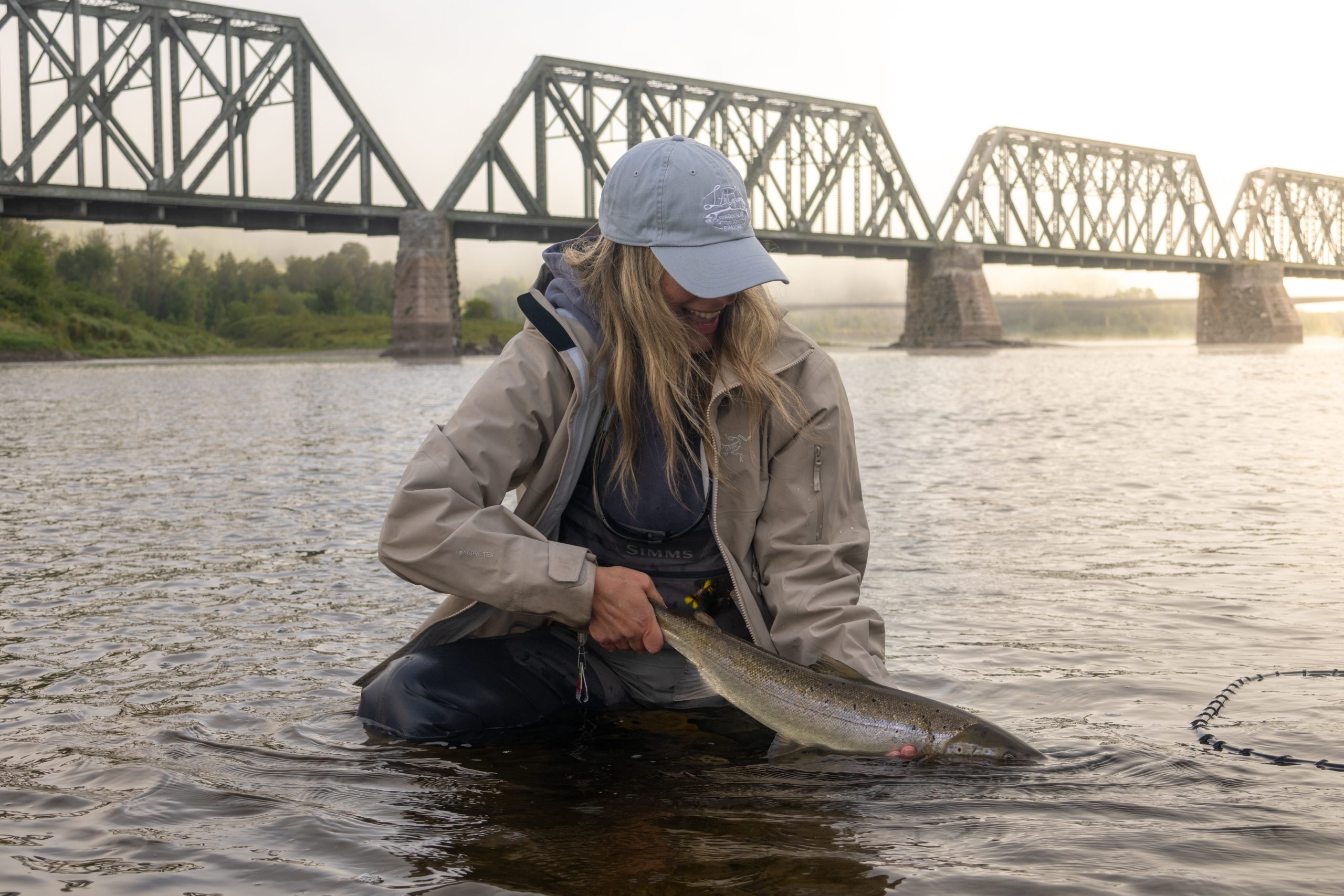
We continue to get great news about restoration work on Prince Edward Island. Hannah MacLean, the Coordinator for the Cornwall Area Watershed Group (CAWG), submitted a small report on a culvert that has been blocking fish passage, and what was done to restore continuous passage this summer. She writes:
“This summer, the Cornwall & Area Watershed Group (CAWG) restored fish passage on Watt’s Creek, a tributary of the North River. For decades, the culvert on Loyalist Road in Miltonvale Park, PEI has been a barrier to migratory fish. It partially blocked Atlantic salmon, brook trout, and rainbow trout, and completely blocked rainbow smelt. By improving passage here, more than 10 km of vital spawning habitat is now accessible.
Smelt passage plays a vital role in river health. Each spring, these small but mighty fish deliver nutrients from saltwater to freshwater. Their journey fuels aquatic food webs and supports salmon, trout, birds, and mammals. By removing barriers, we not only open spawning habitat for multiple species but also strengthen the entire ecosystem connected to the river.
To achieve this, the culvert was back flooded by raising the outlet pool, and a series of natural step pools were built to match the stream’s elevation, creating continuous passage for fish.
A huge thank you to our funders: PEI Watershed Alliance, Foundation for Conservation of Atlantic Salmon, and Atlantic Salmon Federation for making this project possible.”
With summer angling season now closed in Newfoundland and Labrador, our Regional Director, Kim Thompson, reminds readers to submit their salmon angling log. She also has good news to report now that Fisheries and Oceans have published their preliminary fence and fishway counts. She writes:
“With the summer angling season closed in the province anglers are reminded of the various ways to submit your salmon angling log.
The Salmonid Association of Eastern Newfoundland (SAEN) supports the management and conservation of our fisheries resources for future generations. As an incentive, and in co-operation with the Province of Newfoundland & Labrador and DFO, SAEN is offering $500 in prizes, including a salmon rod, SAEN shirts and packages of salmon flies. Anglers who return their log will have their names entered for the draw.
The final Fisheries and Oceans preliminary Atlantic Salmon Fence and Fishway Counts to September 7, 2025 for the season are now published. Angie Roberts, manager at the Torrent River Salmon Interpretation Centre, was very happy to report that the total number of returning adults to the Torrent River was well up from the previous season. “
